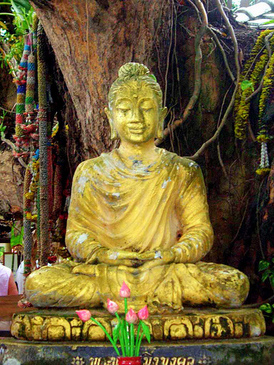
One day this week Lao-Tzu, philosopher (6th century BCE) told me: “Every human being's essential nature is perfect and faultless, but after years of immersion in the world we easily forget our roots and take on a counterfeit nature.” Lao-Tsu’s lofty thought dovetailed neatly with the answer I gave my friend at coffee one morning when she asked me what I was getting out of practicing meditation.
The night before we met for coffee, we were part of a midweek meditation circle that meets in the chapel at the Unitarian Universalist church. Like everyone else there, I was asked to talk about my meditation practice. I think I sounded serious about it as compared to the stop and start nature of other reported practices. Not that I compare. I actually felt somewhat apologetic about sitting almost everyday, about wanting to secure a meditation instructor, and that mudras makes me feel peaceful and proper.
For me, a mudra is a reminder to be aware whether moving and sitting among others or being completely solitary. As I have learned it, mudras are bodily postures or symbolic gestures that help to bring about a connection between the sitter and the Buddha as seen in pictures or statues doing a practice.
A meaningful mudra in my practice is the Dhyani Mudra, a gesture with the back of the right hand resting on the palm of the other so the tips of the thumbs lightly touch one another as the hands rest in the lap. The right hand, resting on top, symbolizes an enlightened state; the other hand, resting below, the world of appearance. I can see in it Lao-Tsu’s vision of both parts of the self, “the perfect faultless essential nature” and the “counterfeit nature”.
All this Lao-Tsu stuff is hard to paraphrase, so at the table over coffee, I diagrammed for my friend who has more of an intention to meditate than a practice, how it looked to me that meditation worked. In my journal I drew a blacked-in crescent moon that I labeled constricted or small sense of self and then I completed the moon-shape, leaving this part of the circle empty to represent the silent, spacious, luminous self. This is the “perfect and faultless” part of myself that becomes accessible through sitting still and letting be.
Lao-Tsu might say the sloppy blacked-in crescent was the “counterfeit nature” that I constructed to serve me in the world of appearance. And I would add that the blacked in part is all I thought I was and the fixing I paid for in therapy was either to erase the mess or improve upon it. In short, make me different than I am.
Meditating lets me experience myself as awareness; sometimes a thought flits across that awareness, sometimes a familiar dreadful pain or panic lands with a thud and threatens to upset the settled self, but breathing into it, welcoming it into the silence loosens my identification with those blacked in parts. I don’t want to turn against the constricted me represented by the blacked-in crescent. Acceptance of this imperfect self will let me continue to be imperfect, but to accept my small self with more equanimity.
This may sound very self-involved, but I have learned that meditation practice intends to improve the welfare of all beings as it teaches those who sit to be kinder, listen better, be more generous and cause less harm.
These lines from poet May Sarton’s poem “Now I Become Myself” describe what it feels like to me to meditate.
“Now there is time and Time is young.
O, in this single hour I live
All of myself and do not move.”
Truthfully, I am not yet up to sitting one hour without a break and my “counterfeit nature” sometimes takes up more than a little space in the full circle of my being.
 RSS Feed
RSS Feed